#united nations civil society conference
Text
Special event to commemorate International Day of Multilateralism and Diplomacy for Peace.
As the world gathers this coming 24 April 2024 not to only commemorate, but also to celebrate the achievements of multilateralism and diplomacy, which has its best representation in the United Nations, humanity, and particularly the peoples of the Global South, suffers from the consequences of a global crisis with multiple dimensions, including, among others, in the climate, food, energy and finance fields, which, coupled with the negative impacts of ongoing wars and protracted conflicts, such as the one in the Gaza Strip, is only keeping us off track from honoring our pledge of leaving no one behind and ensuring the attainment, by 2030, of the Sustainable Development Goals (SDGs).
Objectives:
This commemorative Special Event aims to gather, among others, the Heads of the Principal Organs of the United Nations, as well as high-level representatives from Member States and Observers to the United Nations to engage in a frank and open discussion on how to strengthen and make truly more inclusive the multilateral system, on how to ensure strict compliance and adherence to the Charter of the United Nations, in both its letter and spirit, and on how to balance the participation of relevant stakeholders in some of the intergovernmental discussions within the framework of the three pillars of the United Nations, while ensuring that the intergovernmental nature of the Organization and the leading and central role of States is preserved.
Concept note -International Day for Multilateralism and Diplomacy for Peace 2024.
Watch The challenges of multilateralism and diplomacy for the fulfillment of the promise of the UN Charter in a polarized world.
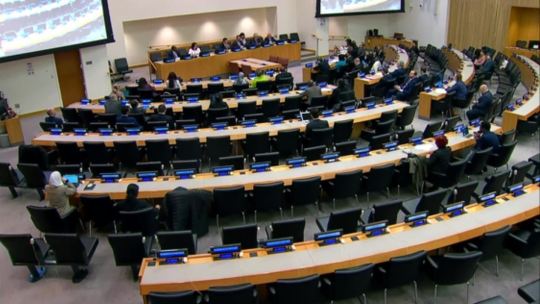
#intergovernmental discussions#International Day for Multilateralism and Diplomacy for Peace#multilateral system#multilateral cooperation#multilateral treaties#conferences#peace and security#change the world#united nations security council#multilateralism#24 april#united nations headquarters#united nations civil society conference#united nations peacekeeping#united nations general assembly#united nations secretary general#panel discussion
0 notes
Text
It seems like every year I end up writing an iteration of the same idea. But here I am! Writing it again! If you haven’t seen the tweet that sparked this conversation, I’ve screenshotted the tweet and artwork below. It’ll help inform this discussion. Full piece under the cut.
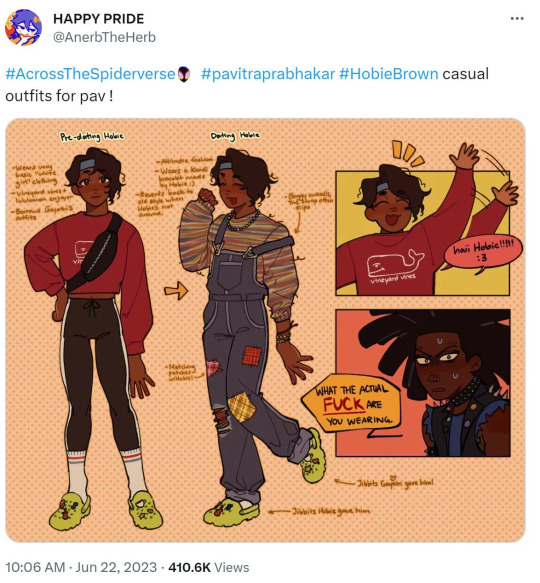

It would help to check out my essay from 2021 about the emasculation of Abdul Ali from Squid Game, since both pieces share similar references.
Maryam Khalid writes “Orientalist notions of the masculinity of the ‘Eastern’ male as uncivilized also inherently ascribe primitiveness, ineptness and a certain amount of weakness to the barbarized ‘other.’” Those doomed to the mythical Orient are automatically placed lower in masculinity than their white and colonial counterparts.
The reason for this emasculation is to defang them, to ensure they can never attain the same power conferred by white masculinity and to maintain racial purity: “This feminizing divests the male body of its virility and thus compromises its power not only to penetrate and reproduce its own nation (our women), but to contaminate the other's nation (their women) as well” (Puar, 99).
To be South Asian is to be pathologically queer, irrespective of the one’s true sexual orientation. “The Orient becomes a living tableau of queerness” by virtue of being from the Orient (Said, 103). There is already a robust amount of artwork depicting Pavitr with tons of gold jewelry and piercings, which to the West are typically feminine accessories. This essentially reduces Pavitr to a stereotype of South Asian culture.
Fanworks use the bejeweled, indulgent, exotic, and sultry attitude as a short-hand for their perception of South Asia. They are “caricatures stripped from movies like Disney’s Aladdin, the Arcana or people’s sexual fantasies about our men,” as allahrakhi writes in her essay on fandom's reception of Claude von Riegan from Fire Emblem: Three Houses, a character similarly mischaracterized by virtue of his brown identity.
Puar describes that the (implied white) nation defines “upright, domesticatable queernesses that mimic and recenter liberal subjecthood, and out-of-control, untetherable queernesses” (47). Nonwhite queerness is “untetherable,” leaving white queerness as “domesticatable.” This inability to engage brown queerness forces brown queer people to assimilate into white queerness.
In fandom’s and society’s mind, there is no such thing as a queer South Asian without them discarding their brown identity and adopting white queer practices, behaviors, and aesthetics. Queer South Asians are “either liberated (and the United States and Europe are often the scene of this liberation) or can only have an irrational, pathological sexuality of queerness” (Puar, 13).
Which brings us to the recent depictions of Pavitr in fanworks, stripping him of his masculinities to render him as a vapid, neutered, and yes, whitewashed queer boy, completely unrecognizable from the source material.
Interestingly, this reduced masculinity co-exists, paradoxically, with the idea that men from the Orient are simultaneously aggressive, belligerent, and violent. Elgin Brunner writes: “Such a framing—the association of the enemy with barbarism, as opposed to the self, which is civilized—includes two, often simultaneous, moves, that is: the ‘hypermasculinization’ of the enemy on the one hand, and his ‘effeminization’ on the other… The very same opponent is, by virtue of being categorized as a cowardly barbarian, rendered effeminate.”
The flip side of the effeminate brown man is the hypermasculine brown man, which can be seen through Miguel, one of Across the Spider-Verse’s antagonists. Both instances of brown masculinity confiscate personhood from characters who would have otherwise offered rich, nuanced, interesting perspectives to the story and to the audience.
It would be myopic of me to not mention the implicit genderings of other nonwhite ethnicities in this discussion. Brown men hold a unique positionality to other nonwhite men in a racial triangulation I’d like to examine further in another essay for the future. Brown men can either be gendered the way that East Asians are (feminine, asexual, neutered, timid, obedient) or the way that Black people are (hypersexual, predatory, dangerous, aggressive). Both misgenderings are in opposition to the “ideal” male gender, which is of course, the white man. This fallacy is why we see Hobie depicted as cruel, mean, and irritated in the exact same artwork from earlier.
Many people in this artist’s quoted replies have accused the artist of being white. I have seen some criticisms of the backlash, that people shouldn’t assume the artist’s ethnicity. I think both opinions miss the point: anyone can be orientalist. Membership within a nonwhite ethnic identity does not absolve the individual of perpetuating orientalist or racist depictions of characters of color.
As Edward Saïd said, “Everyone who writes about the Orient must locate himself vis-a-vis the Orient” (Orientalism, 20). That is to say, if you write and depict the Orient and people from the Orient, you have to consider your positionality in relation to the Orient. Naturally, this would mean that white people should always be cognizant of their depictions of Orientals. But East Asians can also orientalize, whether it is other ethnic groups like South Asians; or self-orientalization. Similar can be said for South Asians who self-orientalize.
Khalid writes “Gendered identities do not exist independently of other factors, and must be viewed as intertwined with, for example, race or ethnicity if we are to understand the hierarchical organization of identities.” There is no examination of gender without an accompanying racial context. And Pavitr’s emasculation in fandom certainly requires a critical eye for both race and gender, lest we repeat the same dehumanizing characterizations of him in further fanworks.
Works Consulted:
Brunner, E. M. (2008). Consoling display of strength or emotional overstrain? the gendered framing of the early “War on terrorism” in transatlantic comparison. Global Society, 22(2), 217–251. https://doi.org/10.1080/13600820801887223
Khalid, M. (2011). Gender, orientalism and representations of the ‘other’ in the War on Terror. Global Change, Peace & Security, 23(1), 15–29. https://doi.org/10.1080/14781158.2011.540092
Puar J. K. (2007). Terrorist Assemblages: homonationalism in queer times. Duke University Press.
Said, E. W. (1994). Orientalism. 25th anniversary edition. With a new preface by the author. New York, Vintage Books.
#pravitr prabhakar#across the spiderverse#spiderverse#meta analysis#critical race theory#gender studies#queer studies#khalid text
249 notes
·
View notes
Text
It has been almost two decades in the making, but late on Saturday night in New York, after days of gruelling round-the-clock talks, UN member states finally agreed on a treaty to protect the high seas.
A full day after the deadline for talks had officially passed, the conference president, Rena Lee of Singapore, took to the floor of room 2 of the UN headquarters in New York and announced that the treaty had been agreed. At a later date, the delegates will meet for half a day to formally adopt the text. She made it clear the text would not be reopened.
“In Singapore, we like to go on learning journeys, and this has been the learning journey of a lifetime,” Lee said.
She thanked delegates for their dedication and commitment. “The success is also yours,” she told them.
She received cheers and a standing ovation from delegates in the room who had not left the conference hall for two days and worked through the night in order to get the deal done.

Pictured: The Intergovernmental Conference on Biodiversity Beyond National Jurisdiction congratulating its President, Ambassador Rena Lee, on the successful conclusion of the BBNJ treaty.
The historic treaty is crucial for enforcing the 30x30 pledge made by countries at the UN biodiversity conference in December, to protect a third of the sea (and land) by 2030. Without a treaty, this target would certainly fail, as until now no legal mechanism existed to set up MPAs [Marine Protected Areas] on the high seas.
Ocean ecosystems produce half the oxygen we breathe, represent 95% of the planet’s biosphere and soak up carbon dioxide, as the world’s largest carbon sink. Yet until now, fragmented and loosely enforced rules governing the high seas have rendered this area more susceptible than coastal waters to exploitation.
Veronica Frank, political adviser for Greenpeace, said that while the organisation hadn’t seen the latest text, “We are really happy. The world is so divided and to see multilateralism supported is so important.
“What’s really important is now to use this tool to develop this 30x30 target into force really quickly.” ...

Pictured: Activists from Greenpeace display a banner before the United Nations headquarters during ongoing negotiations at the UN on a treaty to protect the high seas in New York
“High seas marine protected areas can play a critical role in the impacts of climate change,” said Liz Karan, director of Pew’s ocean governance project. “Governments and civil society must now ensure the agreement is adopted and rapidly enters into force and is effectively implemented to safeguard high seas biodiversity.”
The High Ambition Coalition – which includes the EU, US, UK and China – were key players in brokering the deal, building coalitions instead of sowing division and showing willingness to compromise in the final days of talks. The Global South led the way in ensuring the treaty could be put into practice in a fair and equitable way.

Pictured: A world map that shows the full breadth and potential impact of the treat. National waters are shown in white, and international waters, or the high seas, are everything shown in blue.
Michael Imran Kanu, the head of the African Group and ambassador and deputy permanent representative to the UN for legal affairs of Sierra Leone, said the treaty was “robust and ambitious”. Kanu, who expressed concerns during talks over the fair and equitable sharing of benefits, said: “We really achieved amazing results” on this issue. Monetary and non-monetary benefits would be shared and an initial upfront fund would be set up under the treaty. He welcomed the adoption of the “common heritage of humankind” as a key principle for the high seas, which was a red line for many developing states. “That was significant for us”, he said...
In a move seen as an attempt to build trust between rich and poor countries, the European Union pledged €40m ($42m) in New York to facilitate the ratification of the treaty and its early implementation.
Monica Medina, the US assistant secretary for oceans, international environment and scientific affairs, who attended the negotiations in New York, said: “We leave here with the ability to create protected areas in the high seas and achieve the ambitious goal of conserving 30% of the ocean by 2030. And the time to start is now.”
-via The Guardian (US), 3/4/23
#marine protected areas#conservation#oceans#oceanography#international waters#united nations#30 by 30#30x30#biodiversity#climate change#overfishing#good news#hope
139 notes
·
View notes
Text

Gift for @softguarnere for @hbowardaily holiday gift exchange; Happy Christmas, love! <3
Waiting For Your Reply: A Playlist and Fanfiction:
Lewis Nixon x Reader [Accompanying Playlist here [x]]
Prompt for HBO War Daily Holiday Exchange: Lewis Nixon x Reader, Secret Relationship, United after D-Day
(I tilted this slightly to be United after V.E. Day!)
Author's Notes: This is written for the fictional depictions from the show - no disrespect meant to the real life veterans.
Warnings: Language, sexually suggestive language, you are reading a fanfiction.
Summary: Lewis Nixon's mother, in her own planning for her son's eventual divorce (and heading for her own divorce historically from Mr. Nixon in 1945), encourages our main character, "new money" pushed by her society-climbing mother, to write to Nixon during the course of World War Two. Written between Christmas 1944 and Christmas 1945.
California, 1944
You met Mrs. Doris Nixon at a charity meet you'd been roped into by your mother- half out of an obligation to genuinely help the war effort, half at the prodding to sidle up to society heads.
"I thought we went to California to escape the snow in New England," You mutter, but fixing your gloves to enter the country club, the juxtaposition between cheerful candy canes hanging from nearby palm trees making the upcoming Christmas holidays seem positively comical.
"Yes, and to support the war effort. Their family makes explosives- you think that's going to end anytime soon?" Your mother says dryly, fixing your collar before rebuttoning the top of your blouse. "Now go. And remember her titles- Founder and President of Guide Dogs for the Blind, State Commander of the California Cancer Society, and the National Vice-President of the American Women's Voluntary Services, in addition to the President of the California Chapter-"
"Yes- yes- I remember-" You mutter, practically swatting away Mrs. Nixon's listed credentials that were supposed to be a talking point in order to connect with her. "I can walk in myself, Mother. You know how people react to you in high society-"
Your mother bristles, before sniffing and holding her head high. "They're always afraid of someone who challenges them. That's where you come in. Now go." She reemphasizes, practically swatting your behind to push you forward, but even your mother realizing this wouldn't exactly endear anyone to you.
-----
As soon as you enter the conference room, you could see that any organic way of approaching Mrs. Nixon was all but impossible.
As much as your mother saw you rubbing elbows with old money elites, it seemed every other woman and their daughter in California with two red cents to rub together had the same idea. Your senses were overwhelmed as soon as you entered the room, with women upon women snaking past each other in order to get closer to anyone with a fortune or a son (Preferably, both).
Overwhelmed despite your best (or perhaps, your mother's worst) intentions, all you could do was stare from a distance, before shaking your head and leaning down at the catering table to grab a spinach puff.
"My son loves those," A voice commented, as you look up to meet Mrs. Nixon's gaze. Of course. True society women met every new person who came in with warmth and civility- she was saving you the embarrassment of having to elbow through the crowd, as well as making you feel welcome.
"Oh?" You ask lightly, afraid to pop one in your mouth and to talk through food, instead perching it awkwardly on the edge of your plate. A second's silence, but enough to make you realize you needed to elaborate, or you'd lose her fast.
"Is that why you have such a connection to the cause, ma'am?" You finally manage to say, but saying it softly enough that it came across as genuine and not prying. Your mother would be proud.
Mrs. Nixon's face clouded momentarily, before the serene socialite mask resettled on her face.
"Yes. Lewis is working as an Intelligence Officer, overseas-"
"Well, at least he's certified intelligent. Not just a mother's bias." You can't help but tease, the words out of your mouth before you can stop yourself.
Women turn around to shoot you disapproving looks, as you swallow, looking down and about to excuse yourself, before hearing a bark of laughter, looking up and seeing Mrs. Nixon pull a photo out of her purse, analyzing you for a moment, before turning the photo over and scrawling something on the back.
"Write him. I think he could use a laugh."
You stare down at the general military address given to you, gaping, before looking up and stammering weakly. "Y-You don't even know my name-"
Mrs. Nixon gave you a wry smile, the same smile mirrored in her son in the palm of your hand.
"Bold of you to assume I don't know your mother is waiting right outside. Tell her it's unfortunate, but we don't have time for her to stop in, today. And Lewis is married. Not that has stopped any of the other Nixon men from taking into account the affections of a pretty lady-" She says dryly, pointedly taking two spinach puffs and taking her leave.
-----
New England, 1944
A month later, the address Mrs. Nixon had given you danced between your fingers, along with the face of Mr. Lewis Nixon with it.
"The longer you stare at it, the less likely he'll appear in the flesh-" Your domestic help notes as she brings up your dinner to your bedside.
"That will be all, Betty-" You say evenly, but trying not to smile as she taps the side of her nose, as if to know why you were hesitating.
You never wrote to Lewis Nixon, you were never disappointed.
Plus he was married...
Two seconds later, you were fishing for your best stationary out of your side table, pulling a nearby book onto your bed to use as a desk, and diving in with all the vigour you'd held back for the past few weeks.
Dear Lewis Nixon,
In the spirit of complete transparency, I want to let you know that your mother gave me your mailing address. She seems to think you’re lonely, but I suppose all mothers assume their sons are.
Even those who are married.
So I don’t exactly know what you want from me. I suppose I can pretend to be what you actually wanted when opening up a letter from overseas. A happy surprise.
What’s your type? A Hedy Lamarr? Betty Grable? Even a Katherine Hepburn?
Let me know what I should be to you, and my bust size will expand and contract accordingly.
In the meantime, I will pretend you are Cary Grant.
Yours sincerely, Me, xoxo
You scrawl your name and address on the front, slide it between the letters of your father's to be mailed out in the morning, and promptly assume you'll never hear from the photo now hidden between The Bible your mother forced you to still keep in your bedside table.
---
The letter came back just before Christmas, where your mother was launching into another lecture about you entering your mid-twenties and not having found a suitable match.
"What are you waiting for?"
"Not that!" You argue, throwing your mother's latest option back in her face.
"You've been out in society for six years- all the best choices are taken or divorced-!"
"Well, next time a man shows up on our doorstep, mother, I'll be sure to tell him I'm a pathetic old spinster with no other options, so he better take me now or lose me forever!" You snap, shoving back from the table with a satisfying squeak on the newly varnished wooden floors and storming out of the house, ignoring your mother's shrill condemnation of unladylike behaviour.
It was only when you got to the front of the waterfront near your house did you pull out the mail handed to you that day, sorting through your correspondence, before pulling out a foreign, shaky scrawl, stamped with approval from the U.S. Army.
Hey, Rita Hayworth:
Nice to know my mother continues to be involved in my love life at least three continents over and while I'm in the middle of a Belgian forest.
My ideal bust size is 36, but I don't complain, as I take what I can get.
I don't know exactly what you want from me, either. But perhaps we can find out together.
Nice to know you, too.
Yours,
Cary
(P.S: Send a photo, if you're brave enough).
You look down at the letter, blinking a couple of times, before a smile slowly grows on your face.
You liked a challenge.
----
Your correspondence continued into 1945, kept hidden from your mother and prying eyes, and considering Lewis' marital status, you assumed he kept your correspondence relatively low key.
You both pretended it was nothing, really. At least, on your part. Only you knew that you spent hours getting ready to take a proper photo at the local department store to send off.
There was a lull in activity in spring with V.E. Day in May, although you had a sense of why. Everyone heard the Japanese were on the verge of surrendering after the Germans had effectively turned it in. It was only a matter of time.
The last letter you got from Lewis Nixon was messier than usual. It contained something heavy.
When you opened it, gold ring. Drunk, failure, with failure rubbed out so hard it had ripped the page. Followed by the words. "I write to you from the dead. Divorced."
All you could do was write back and say "That's not funny."
Your first instinct to respond immediately. Next morning down to the water, the only place to write away from prying eyes. The only thing she could think to do was circle the erased bit and draw a line through it, before folding it to go inside the envelope.
You stared at the blank pieces of paper that remained in your hands, before writing down all your own insecurities.
"I'm a coward." You write. "I'm sheltered. I complain about luxuries while enjoying them. I'm a disappointment to my parents. I haven't done half of what I could have done for this war. And I don't want anything- all I know is what I don't want. I keep waiting for what I want to hit me, but it never does. But I know you're not dead. And you're not a failure. And if anything's hit me, it's you."
You post it that day, avoiding the advances of yet another of your father's tennis partners.
-------
By the time Christmas 1945 rolled around, you hadn't heard from Lewis Nixon in months. You knew he wasn't dead, having unanticipatedly received a glowing but generic mailing list letter from the former Mrs. Nixon from Palm Beach, Florida. Your mother could hardly contain her excitement as you look headed past your mother's Christmas party guests and made a strategic beeline past the mistletoe to people-watch in the corner all the people who were barely affected by the war that had occurred almost a world away.
Suddenly, you felt a knock behind you on the window.
You looked down, and were directly looking into the face of the photo still kept within your Bible upstairs.
You gaped, the snow swirling around him outside, wearing a clearly well-designed wool coat, but the intensity in his gaze obvious, it hard to tell whether he was focused or drunk, or what exactly he was doing there.
You looked across the room to see your mother none the wiser to her potential cash cow outside, before looking back down, unable to keep from putting your fingertips to the glass. "I-It's cold out." You finally mouth, as he looks up at you.
"You're not a coward." Lewis looks up at you, before a hint of the humour you had grown to miss over the past couple of months, the corner of his mouth twitching. "Not if you come with me now."
You imagine yourself hearing things, but Lewis' words definitely audible through the single-pane glass. You look back as if on instinct, but Lewis immediately tapping the glass, forcing you to focus back on him, the drifting of "Have Yourself A Merry Little Christmas" now seemingly the only thing coming between you two.
"Come with me."
"Where?" You mouth back, but a smile slowly growing on your face.
Lewis gives a little shrug, but his own smile growing to mirror yours.
"Wherever you want to go, Rita. As long as it doesn't involve your mother."
Within five minutes, you had a small bag packed and made an excuse to excuse yourself outside, the feeling of Lewis' arm around your shoulder making you giddy as you threw your bag into the back of a luxury car, with Lewis' ring in your back pocket.
"Cary," You tease as you move over to crank the heat in the car, before cuddling close on the bench seating, pulling your yellow wool coat closer around you.
"You're a couple inches shorter than you look in the movies."
"A Merry Christmas to you too, sweetheart."
-----
Playlist:
Sweet Talk by Saint Motel
Moving- The Happy Fits
Young and Beautiful by Lana Del Rey
The Last Great American Dynasty by Taylor Swift
Champagne Problems by Taylor Swift
This Boy by The Beatles
What You’re Doing by The Beatles
If I Fell by The Beatles
Baby I’m Yours by The Arctic Monkeys
No 1. Party Anthem by The Arctic Monkeys
#band of brothers#band of brothers fanfic#lewis nixon x reader#band of brothers x reader#band of brothers imagine#my writing#my edits#I wrote this in November LOL hopefully you like <3#lewis nixon#hbo war#softguarnere#hbowardaily
45 notes
·
View notes
Text

In addition to AI, the 10 Million Names Project is employing oral histories and archived documents to help identify 10 million enslaved people in pre- and post-colonial America.
When journalist Dorothy Tucker first learned about the 10 Million Names genealogical project, it helped amplify memories of long car journeys from Chicago to “Down South” in the 1960’s, where her mother’s family owned land.
The Mississippi property purchased by her great-grandfather George Trice in 1881 was special for several reasons. First, nobody’s really sure how a formerly enslaved man was able to purchase 160 acres, but Trice came up with the $800. And every time Tucker and her family drove down to Shannon, Mississippi each summer to visit relatives, it was more than just a vacation.
“I'd wake up in the morning and have breakfast at my aunt's house. I'd go a few feet down the road and have lunch at my great-aunt's house. And then I'd play outside at my cousin's house,” says Tucker, an award-winning investigative journalist with CBS2 WBBM-TV in Chicago. “It was that way all day long. Every house was owned by a relative. I thought everybody lived like this. I thought everybody had land and stuff that was theirs.”
Tucker finally got specific details about how and why that land was purchased during the final months of her term as president of the National Association of Black Journalists. In early 2023, NABJ Board Member Paula Madison, a retired NBC Universal executive, informed the group about an offshoot of the Georgetown Memory Project, the initiative that unearthed information about the 1838 sale of enslaved Africans to fund Georgetown University. The 10 Million Names Project was created to recover the names of an estimated 10 million men, women and children of African descent who were enslaved in pre- and post-colonial America between the 1500’s and 1865. By engaging with expert genealogists, cultural organizations, and family historians both Black and white, the initiative hopes to provide more African Americans with information that only formally began to be captured for their ancestors in the 1870 United States Census.
Up until that year, enslaved Africans and their descendants were only acknowledged as the property of their owners. If their existence was noted, it was in the form of sales documents or as catalogued property in civil records. Also, the relatives of enslavers often maintain troves of information about those purchased and sold off that would otherwise be completely lost.
(This database is helping to uncover the lost ancestry of enslaved African Americans.)
Much of the work will be dependent on oral histories passed down thru generations of families, and researchers of the 10 Million Names Project also hope that more white families will aid in the search by making familial records, like letters and pages from family bibles, available to them.
Tucker, who ended her term as NABJ president during that organization’s annual conference in August, revealed at the awards banquet in Birmingham, Alabama that she’d been able to learn more about her great grandfather’s real-estate ventures, through a collaboration between NABJ and the New England Historical Genealogical Society’s American Ancestors initiative.
The 10 Million Names Project was formally launched at the convention. Tucker considers it an especially timely parting gift to her journalistic colleagues. As societal divisions along racial lines widen, hate crimes continue, and attempts to ban books and curtail African American studies programs in schools and universities increase, strengthening historical knowledge is urgently important for Black Americans, Tucker says.
“I think that the ability to tell these stories and to know them is so critically important,” she says. “When you know your personal story, then as a journalist, it gives you the perspective to dig deeper when you're doing the next story, whether it’s about the school board or about Ukraine or the next elections. You know, these stories are all tools that are really good for all of us.”
How the initiative evolved
The man who is the catalyst for the Georgetown Memory Project and 10 Million Names says he’s never really been interested in investigating his own family tree.
“To me, genealogy was sort of like butterfly collecting,” says Richard Cellini, a faculty fellow at Harvard University and founding director of the Harvard Legacy of Slavery Remembrance Program. “It’s impressive because of the amount of effort invested into it. But I never quite understood the point.”
Cellini was born in 1963 in Central Pennsylvania to a Penn State University professor and homemaker mother. His Catholic upbringing steered him to Georgetown University and an eventual decade-long law career before pivoting toward the software and technology realm. In 2015, Cellini learned that his alma mater had formed a working group to explore the sale of 272 men, woman, and children in 1838 to rescue the university from bankruptcy. As a white American of European descent, he says he did not live with or know many Black people growing up, going to school or during his legal and technology careers, so the initiative opened a window in his mind.
When Georgetown President John DeGioia invited alumni to weigh in, Cellini wrote an email asking one simple question that had nothing to do with the university. He wanted to know, “What happened to the people?”
Cellini says a senior member of the working group wrote back to say that research had concluded that all of the enslaved men, women, and children had died fairly quickly after arriving in the swamps of Louisiana where they had been transported.
“And I remember just staring at that email, even though I didn't really know much about the history of slavery or African American history, and just thinking that just doesn't make any sense,” Cellini says. Curiosity drove him to form an independent research group, funded initially through his own credit card and then from other Georgetown alumni who eagerly offered financial backing. To date, the Georgetown Memory Project has fully identified 236 of the 272 enslaved people sold by the university's leaders. Of those identified through archival records, the project has verified more than 10,000 of their direct descendants.
“The 1838 slave sale at Georgetown brought home to me, again, they were real people with real families and real names,” Cellini says. “More than 50 percent of them were children. William was the youngest, and he was six months old. And Daniel was the oldest at 80. Len was sickly, and Stephen was lame. I mean, this is all from the original documentation. From that moment on, I just couldn't get it out of my head.”
The gathering of history
The genealogists and historians connected with the project suggest that the richest vein of information may well be in the oral histories they’ve already begun gathering through hundreds of interviews. They contain fascinating stories like the ones that Kendra Field’s grandmother Odevia Brown used to tell about her African American and Native American forebears in Oklahoma. When Field was in high school, she never really liked history classes, but she always loved her grandmother’s stories.
“It wasn't until I got to college that I realized, thanks to a wonderful professor, that my grandmother's stories were history,” Field says. After the death of her father, Field began to travel back to those historically Black Oklahoma towns to explore her African American and Creek Indian heritage. Now in her career as a historian, author and professor at Tufts University, Field also has taken on the role of chief historian for 10 Million Names.
Technology, including the use of artificial intelligence programs, is allowing project investigators to do quicker, more efficient searches for information. Field says that can happen by identifying the location of plantation ledgers, advertisements, and receipts from auctions. “Particularly, there's been a lot of advancements made in optical character recognition, which allows researchers to identify names and handwritten records,” Field says.
Prior to this, a researcher had to find the document, transcribe the information, and then pivot to another database to go deeper. But with the development of other genealogical data sets such as Enslaved.org, locating individuals and making connections becomes much easier. “So that means we can move closer to that 10 million much more quickly than we would have been able to even a decade ago,” Field says. Also, the collection at the Library of Congress, “Born in Slavery: Slave Narratives from the Federal Writers' Project, 1936 to 1938” has yielded important clues from the estimated 2,300 people interviewed during that project.
(The search for lost slave ships led this diver on an extraordinary journey.)
Though identifying 10 million people who were never meant to be known as human beings may sound like a staggering task, the people behind the initiative believe it’s a totally attainable goal—even amidst all the current cultural and ideological turmoil in American society. That’s because, Cellini says, there are certain inalienable truths in this world.
“John Adams said that facts are stubborn things. You know, our Black brothers and sisters have always known their history and white people have always tried to prevent Black people from learning that history. What's new here is that white people are now trying to prevent other white people from learning this history.”
Cellini believes that Black Americans aren’t the only ones who want or need to know the full story. “It's white people who hunger for knowledge of that history, as well. It’s our duty to engage in determined resistance, to strike repeated blows for the truth. And nothing is more stubborn than facts.”
And like journalist Tucker, Cellini believes the search is infinitely for the benefit of the whole of society.
“The hard part isn't the finding,” Cellini says of the effort. “The hard part is the looking. But when we look, we find. And when we find, the whole world changes.”
#Africans#Black Lives Matter#Black Lineage#american freedmen#Black Freedmen#Black Americans#10 million enslaved Americans' names are missing from history. AI is helping identify them#10 million names project
40 notes
·
View notes
Text
By Olivia Rosane
Common Dreams
Dec. 19, 2023
"This COP has once again proven that the COP processes are not working in our favor," the climate activist said.
Swedish climate activist Greta Thunberg called the outcome of the 28th United Change Climate Conference—which agreed to "transitioning away from fossil fuels" but stopped short of the phaseout demanded by civil society and climate-vulnerable nations—a "betrayal and a stab in the back."
COP28 concluded in the United Arab Emirates on December 13. The outcome, also called the "UAE Consensus," marks the first time that fossil fuels have made it into the final text to emerge from a U.N. climate summit. While some are celebrating this milestone, Thunberg was not impressed.
"The final outcome of COP28 is not a 'historic win,'" she wrote on social media Friday. "It is yet another example of extremely vague and watered down texts full of loopholes that in no way is even close to being sufficient for staying within the 1.5°C limit and ensur[ing] climate justice."

Speaking to Reuters at a protest outside the Swedish parliament on Friday, Thunberg said the agreement was the "bare minimum" and rejected the idea that it was a "first step."
"We've already had first steps and they haven't led us anywhere," Thunberg said. "The emissions are still increasing. We are experiencing record highs."
She also questioned the validity of U.N. climate negotiations.
"This COP has once again proven that the COP processes are not working in our favor," she told Reuters. "They are not designed to solve the climate crisis. They are more working as an alibi for world leaders" to hide behind their signature on a document while continuing to do nothing.
"We need drastic immediate emission cuts and binding commitments from the largest contributors of the climate crisis to finance loss and damages, adaptation, and a just transition in the most affected areas."
Thunberg's remarks build on her criticism of COPs in recent years. She stopped attending the gatherings beginning with last year's COP27 in Sharm El Sheikh, Egypt, which she called an opportunity for "greenwashing, lying, and cheating," according to Euronews Green.
This year, she particularly criticized the fact that members of small island states were not in the room when the final deal was adopted.
Thunberg said this was "undemocratic" and "completely unacceptable."
"We cannot talk about climate justice when without having the most affected in the room," she told Reuters.
On her Friday social media thread, Thunberg outlined what she thought successful climate action would look like.
"We need drastic immediate emission cuts and binding commitments from the largest contributors of the climate crisis to finance loss and damages, adaptation, and a just transition in the most affected areas," she said.
Thunberg's remarks add to those of many other climate activists and scientists who have criticized the deal for falling short of ensuring the 1.5°C target, inadequately funding the renewable energy transition in the Global South, and allowing dangerous loopholes such as carbon capture and storage technology promoted by the fossil fuel industry as a way to keep pumping while promising to "abate" their emissions.
"Although the text mentions a transition away from fossil fuel energy systems in a just and equitable manner, the text is full of loopholes and false solutions on unproven and expensive technology like nuclear, abatement, carbon capture and storage, transitional fuels, etc.," Philippines climate activist Mitzi Jonelle Tan said, as Euronews Green reported.
The group Scientist Rebellion put out a statement Friday calling for a global movement to keep fossil fuels in the ground.

"The United Nations climate summit, hijacked by the fossil fuel cartel, has gifted a blank check to rich countries and Big Oil to kill one billion people and force billions more to flee their homes by 2100," the group wrote. "The so-called 'historic' outcome of COP28 fails to deliver the most basic and necessary measures which would have prevented societal and 'Earth systems' collapse, as outlined by the IPCC: eliminate fossil fuel subsidies and halt all new gas and oil projects."
Their statement concluded: "It is time to listen to the scientists, hundreds of whom have been driven out of their labs and into the streets to engage in civil disobedience: If we want to avoid condemning both this generation and all that follow to the worst outcomes of the climate crisis, we must all rise together in order to keep fossil fuels in the ground. The time is now."
Our work is licensed under Creative Commons (CC BY-NC-ND 3.0). Feel free to republish and share widely.
#cop28#fossil fuels#carbon capture and storage#greta thunberg#climate crisis#climate emergency#climate finance#climate justice#scientist rebellion
28 notes
·
View notes
Text
Employers did not simply develop the beauty backlash because they wanted office decoration. It evolved out of fear. That fear, from the point of view of the power structure, is firmly grounded. The beauty backlash is indeed absolutely necessary for the power structure's survival.
Women work hard—twice as hard as men.
All over the world, and for longer than records have been kept, that has been true. Historian Rosalind Miles points out that in prehistoric societies, "the labours of early women were exacting, incessant, varied and hard. If a catalogue of primitive labour were made, women would be found doing five things where men did one." In modern tribal societies, she adds, "working unceasingly during the daylight hours, women regularly produce as much as eighty per cent of the tribe's total food intake, on a daily basis... male members were and are doing only one-fifth of the work necessary for the group to survive, while the other four-fifths is carried out entirely by women." In seventeenth-century England the Duchess of Newcastle wrote that women "labour like beasts." Before the Industrial Revolution, "no work was too hard, no labour too strenuous, to exclude them." During nineteenth-century exploitation of the factory system, "women were universally worked harder ... and paid less" than men, "employers everywhere agreeing that women were 'more easily induced to undergo severe bodily fatigue than men.'" Today the "primitive" five to one ratio of women's work to men's has declined to a "civilized" two to one. That ratio is fixed and international. According to the Humphrey Institute of Public Affairs: "While women represent 50 percent of the world population, they perform nearly two-thirds of all working hours, receive only one-tenth of the world income and own less than 1 percent of world property." The "Report of the World Conference for the United Nations Decade for Women" agrees: When housework is accounted for, “women around the world end up working twice as many hours as men."
The Beauty Myth: How Images of Beauty Are Used Against Women, by Naomi Wolf
#the beauty myth#naomi wolf#radblr#radfem#radical feminism#radical feminist safe#radical feminists do interact#radical feminists do touch#radical feminists please touch#feminism#feminist literature#radical feminists please interact#radical feminist literature#radical feminst#radical feminist theory#patriarchy#misogyny
7 notes
·
View notes
Text

(Berlin, May 2, 2024) – Azerbaijani authorities should immediately free a prominent human rights defender, Anar Mammadli, and drop the charges against him, the Human Rights House Foundation said this week in a statement signed by Human Rights Watch and 28 other groups. Mammadi was arrested on April 29, 2024, on bogus “smuggling” charges amid an escalating crackdown on independent voices.
Mammadli, who is a member of the Network of Human Rights Houses, is also a founding member of the recently formed Climate of Justice Initiative. The group is a civil society undertaking that seeks to use the 29th United Nations Climate Change Conference (COP29), which will take place in Azerbaijan’s capital, Baku, in November, to promote civic space and environmental justice in Azerbaijan.
Azerbaijan’s crackdown on freedoms of expression, assembly, and association raises grave concerns about how civil society, including activists, human rights defenders, and journalists will be able to participate meaningfully and push for ambitious action at COP29, Human Rights Watch said.
The statement urges other countries to use the momentum around COP29 in Baku to demand the release of Mammadli and all other political prisoners in Azerbaijan. (Human Rights Watch)
11 notes
·
View notes
Text
so with this weekend being the canadian gp, i'd like to take a moment and bring attention to the indigenous peoples who have suffered immensely at the hands of settler-colonizers on this land. (note that i'm only an ally, so if there are indigenous folks living in what's now considered montreal and/or quebec on f1blr, by all means please take the floor!)
canada is known for its cultural mosaic and for being the friendly country full of nice people who say aboot and use maple syrup with everything. our "origin story" is boring--conferences instead of a civil war? talk about a snoozefest in high school history. anyway, universal health care, moose, hockey, french, et cetera (/sarcasm). so it's understandable that people buy into the propaganda! even most canadians are proud of this image.
but beneath the surface, i think our propaganda is just as, if not more, insidious than that of the united states (our closest and most comparable neighbour). the truth is, canada is complicit in attempted genocide. around this time last year, the bodies of 215 indigenous children were unearthed from a residential school in BC. there are thousands of unmarked graves where residential schools were.
but this isn't history; this is now. the last residential school closed in 1997. still, indigenous peoples in saskatoon are given "starlight tours" where police take them to the middle of nowhere to freeze to their deaths; our laws are such that indigenous peoples and their families cannot claim indian status and gain any benefits if they marry a non-indigenous person; reserves are without basic resources like access to potable water and nigh on unlivable; the rcmp have killed inuit sled dogs; funding to indigenous initiatives has repeatedly been denied by the government; and so, so much more that would take more than a text post on tumblr to convey the horrors of.
montreal, originally tiohtià:ke, is on unceded kanien’kehá:ka territory, which is part of the haudenosaunee nation. it's land under the hiawatha wampum belt and the dish with one spoon agreement, which together promote peace, unity, and responsibility to the land. the dish with one spoon in particular speaks to how we only have one dish--that's earth--and we should only take what we need, leaving resources for others while keeping the earth clean.
as far as being actionable, i can't give a definitive, be-all end-all list of things you can do. but if you're going to the grand prix, i at least recommend trying out the following:
PICK UP AFTER YOURSELF. honour the agreement! we're usually pretty good at about recycling and sorting garbage, and though i've never been to the circuit, i would honestly be surprised if there weren't green bins and paper and plastic recycling along with regular garbage bins. (nb if ur gonna try canadian things: tim hortons coffee cups are NOT recyclable, but their ice capp/frozen drink cups are!)
educate yourself! i'll link a couple sites below where you can get started, but for an introduction, i cannot recommend chelsea vowel's indigenous writes enough. it's a fantastically written guide to first nations, métis, and inuit issues in canada, and it's fairly recent too!
start following indigenous activism!!! for starters and to learn a little bit of the history, you can read up on the idle no more movement.
if you have questions or want to know more, i've got some pdfs and other recommended reading, but really you can learn a lot by going down rabbit holes. again, if someone who is actually indigenous wants to speak on this, i will gladly step aside!
some starter links:
tiotià:ke - réseau de la communauté autochtone à montréal
"Learn about the Land and Peoples of Tiohtià:ke/ Montreal" - mcgill
215 bodies - the guardian
residential schools - ubc indigenous foundations
the indian act - ubc indigenous foundations
orange shirt society / every child matters
60s scoop - ubc indian residential school history and dialogue centre
national centre for truth and reconciliation
393 notes
·
View notes
Text

https://www.reuters.com/world/americas/wildfire-evacuation-notice-issued-alberta-town-fort-mcmurray-2024-05-11/
5 notes
·
View notes
Text
Six more provinces are scheduled to be declared landmine free in 2023, including Kampong Speu, Kratie, Kampong Thom, Siem Reap, Mondulkiri, and Ratanakkiri provinces, after 12 provinces were previously declared mine free.
Senior Minister Ly Thuch, First Deputy Chairman of the Mine Authority, said in a press conference on the morning of July 18, that for more than 30 years, Cambodia has been very successful in clearing mines on more than 2,794 square meters with millions of munitions, including more than 1 million anti-personnel bombs (1,177,000), more than 26,000 anti-tank mines, which left more than 60,000 people affected by explosive remnants of war.
More than 4 million explosive remnants have been found by the mine authorities over the past 30 years and have been completely destroyed while 2,794 square kilometers have been handed over to farmers.
Senior Minister said that so far, 12 provinces have been declared mine free, while in 2023, the mine free status will increase to 18 provinces.
Among the provinces announced, some provinces have received the support of the Prime Minister’s project, called “Providing Safe Ground, Creating Smiles” project, up to 3,663 rounds of ammunition were found, including 50 mines and 7,000 unexploded ordnance, and nearly 200,000 people were affected.
The remaining 358 square kilometres of landmines are minefields to be cleared in the upcoming seventh mandate; cluster munitions cover about 700 square kilometres; and explosive remnants of war cover about 500 square kilometres. The mine authority plans to clear 358 square kilometres, which requires $78 million.
The senior minister confirmed that the results of demining from 1992 to June 2023 under the auspices of Australia, Japan, the United States, Britain, Germany, Switzerland, Norway, China, Ireland, New Zealand, the Republic of Korea, Hungary, India, Canada, the United Nations, the EU, Spain, Sweden, Austria, Belgium, France, the Netherlands, Hungary and Denmark, as well as civil society organizations, the private sector and philanthropists. Kampuchea Thmey
25 notes
·
View notes
Text
Speak out and share ideas that could contribute to the Pact for the Future negotiations, in line with SDG 17 and the Common Agenda's vision of networked multilateralism.
The 2024 United Nations Civil Society Conference will provide an opportunity for multi-stakeholder engagement ahead of the Summit of the Future and a venue for civil society to participate in the preparations process. The conference will provide civil society with an additional platform to speak out and share ideas that could contribute to the Pact for the Future negotiations, in line with SDG 17 and the Common Agenda's vision of networked multilateralism.
Watch the 2024 UN Civil Society Conference Town Hall.

#multi-stakeholders#Summit of the Future#civil society organizations#United Nations Civil Society Conference#conference#sdg17#partnership#UNwithCivilSociety#2024UNCSC#multilateral cooperation
0 notes
Text
UN Secretary-General Antonio Guterres took center stage at the United Nations headquarters to speak about what he thinks is the spiraling issue of online “misinformation.”
The Proposal: Going on record, Guterres dubbed the misinformation situation “grave” and pitched the idea of stitching together an international code.
The plot: Guterres’ game plan? A trifecta alliance – roping in governments, tech juggernauts, and civil society – aimed at putting the brakes on the rampant spread of false information, especially on social media. What could possibly go wrong?
What he said: “The proliferation of hate and lies in the digital space is causing grave global harm now,” Guterres said at the press conference on Monday. “It’s fueling conflict, death, and destruction now. It is threatening democracy and human rights now.”
Free Speech Watchdogs Raise Eyebrows: Free speech supporters should be on high alert. All of this talk of regulatory overreach could silence genuine dissent and critical voices, as has already been happening over the last several years. Legal scholars and civil liberties organizations are urging that the proposed code should meticulously consider the implications on free speech, and seek to establish a nuanced approach. The real ones should be calling for it to be scrapped altogether.
Treading Carefully: Guterres didn’t have his blinkers on. He put the alleged dangers of misinformation front and center of his argument – think COVID-19 (who could forget) – but was quick to demand an international code that’s transparent.
Behind the Curtain: The nitty-gritty of the code? It’s still a secret but Guterres said a “United Nations Code of Conduct” for digital platforms should be coming next year.
The general consensus is that it’s likely to be an umbrella approach – think media literacy programs, some new ground rules for social media platforms, and a dash of fact-checking – the same type of stuff that’s plagued the internet over the last few years.
20 notes
·
View notes
Text
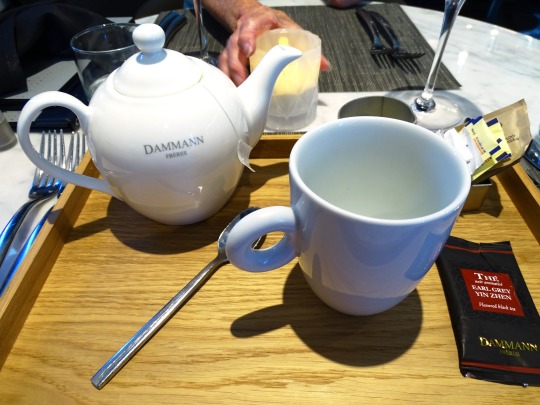



























International Tea Day
While everyone loves a cup of tea, many of the workers and producers of that tea face poor conditions and pay. Help raise awareness and keep tea fair.
The tea industry provides millions of people around the world with cups of tea in the morning. One of the biggest producers of tea, India, recognizes the importance of tea in its communities and as a commodity for commerce.
However, much of the working conditions for those within the tea industry still need much improvement. If you think this holiday was about drinking tea, well think again! International Tea Day is all about the tea workers and bringing civil rights into action. Let’s see how this holiday came to pass.
Do you love a good cup of tea? While International Tea Day can certainly involve paying homage to tea, we should pay homage to those working in the tea industry. The best way to do this is by helping to raise awareness regarding their working conditions so they can be improved.
History of International Tea Day
The International Tea Day campaign was launched in 2005 by the trade unions, small tea growers and civil society organizations in Asia and Africa to address the issues of living wages for workers and fair prices for small tea producers.
The International Tea Conference in New Delhi came out with an International Declaration on the rights of workers and small growers to help regulate uneven competition, land ownership, safety regulations, rights of women, social security and living wages. Another organization, The Tea Board of India, proposed International Tea Day in hopes of it becoming an official holiday to the UN Food and Agriculture Organization.
This was proposed by chairman Santosh Kumar Sarangi in 2015. According to the chairman, the proposal of India was supported by countries such as Canada, the United States, European Union, Sri Lanka, China, Japan, Kenya, and Malawi. While the holiday doesn’t have official status, the goal of this holiday is to recognize the vulnerable situations that tea producers in India have with current living conditions and worker-related policies.
The day also focuses on deliberating on urgent issues such as residues, climate change, technology and trends on production and consumption in the tea industry. To observe this day, over 150 representatives from tea organizations gather and conduct a seminar to discuss the pervading problems the tea industry has as well as problems faced within their own country.
International Tea Day Timeline
2737 BC Tea is discovered as a beverage
Legend has it that Chinese Emperor Shen Nung is sitting beneath a tea tree while a servant boiled water for drinking. Some leaves fall into the cup and begin the practice of drinking what is now called “tea”.
1610 Tea comes to Europe
It is believed that the Dutch were the first to bring tea to Europe, just a few years prior to the introduction of coffee by Venetians.
1773 The Boston Tea Party occurs
With the intention of revolting against the high taxes levied by the British government without providing any voice, residents of Massachusetts throw tea into the Boston Harbor. “No taxation without representation” is the major complaint.
2004 International Tea Day is created
At the World Social Forum, International Tea Day is conceived and then celebrated the following years in New Delhi and Sri Lanka, then later in other tea-producing places like Nepal, Viet Nam, Bangladesh and others.
2019 United Nations adopts International Tea Day
After some years of advocating for its observance, International Tea Day is adopted by the United Nations General Assembly at the suggestion of the FAO Intergovernmental Group on Tea.
How to Celebrate International Tea Day
If you’re a lover of tea, then do some research about some of your favorite companies. Try looking up tea brands that support fair trade, and possibly switch to those brands to make a difference in the way you buy products such as tea. Use the hashtag #internationalteaday to help recognize it as an official holiday and educate others about the tea industry if you’re interested.
You could also use International Tea Day to try a variety of tea you have never had before. Matcha, for example, is highly popular as of late. You need to shop with care, though! The first thing you need to take a look at is how the Matcha has been produced and sourced.
You need to ensure that all veins and stalks have been removed so that there is not any bitterness and only the finest leaves should be used. Secondly, the color of the matcha powder is a significant factor. The greener the color is, the better. This is because the leaves are forced to overproduce chlorophyll because Matcha is shade-grown, which causes the vibrant green shade.
If the Matcha is yellow or brown in color, this is a sign that the leaves have not been properly shaded or that branches and stalks have been included. The price is the third factor to consider. Like most things, if you want quality, you can expect to pay a little bit more.
If something seems too good to be true, the chances are that it is. The feel of Matcha is also important. It should be a fine powder that is very silky. Last but not least, the taste is obviously a crucial attribute when it comes to quality. It should have a clean and naturally sweet taste.
Why not make some delicious baked green tea treats on International Tea Day and have a bake sale to raise money and awareness regarding working conditions in the tea industry? Green tea recipes are available in their abundance. People are actively searching for different ways to enjoy green tea. While green tea is delicious when simply mixed with hot water, there is nothing wrong with switching it up from time to time, especially on International Tea Day!
An easy and delicious recipe is Matcha Meringue Kisses. To make this you will need Matcha, sugar, egg whites, and powdered sugar. Begin by sifting together the Matcha and the powder sugar, and then whip the egg whites until they have soft peaks. Gradually add the sugar and whip until stiff peaks. Gently fold the Matcha into this mixture and then transfer to a pastry bag. Pipe the mixture into small kisses onto a baking tray and then bake for around an hour.
Or, why not make Green Tea Donuts? For this, you need green tea, honey, melted butter, milk, egg, salt, baking powder, sugar, and cake flour. You whisk the green tea, salt, baking powder, sugar, and flour. Add the honey, melted butter, milk, and egg, and then whisk. Use a pastry bag to pipe the batter into the mould. Then, simply bake the donuts for eight minutes. You can make your own glaze to go on the top – chocolate goes well!
Other delicious baked treats to try include green tea muffins, brownies and shortbread!
International Tea Day FAQs
What is International Tea Day?
Created to celebrate and pay tribute to the countries that produce tea to supply to the world, starting in India and moving to other places like Sri Lanka, Malawi, Uganda, Bangladesh, Vietnam and more.
When was International Tea Day first celebrated?
International Tea Day first got its start in 2004 when it was celebrated in New Delhi. It grew over the years and by 2019 the day was adopted by the United Nations General Assembly.
How to celebrate International Tea Day?
A great way to observe this day is by learning a bit more about the nations who produce tea for the world. Also, don’t forget to order a cup of fair trade tea for one, or take a friend out to enjoy a cuppa together.
What is the theme of International Tea Day?
The theme for this day devoted to tea producers changes each year, but some of the past themes have included themes such as Tea and Fair Trade or Harnessing Benefits for All from Field to Cup.
When is International Tea Day celebrated?
Taking place on May 21 of each year, International Tea Day originally took place on December 15 from 2005 when it was often only celebrated by tea-producing countries. It changed to May 21 when the UN adopted the day.
Source
#Earl Grey#Earl Grey Tea is my favorite tea#Computer tea Earl Grey hot#USA#I don't like coffee#I only drink tea#original photography#always unsweetened#Lemon Black Tea Lemonade#Tropical Ice Tea#Peach Green Tea#Lavender Ice Tea#Pineapple Black Tea#Strawberry White Tea#Peach Citrus Green Tea#International Tea Day#21 May#InternationalTeaDay#travel#vacation#Capilé#Portugal#Women are Persons By Barbara Patterson#Tea Earl Grey Hot#Spiked Texas Tea#Lemon Black Tea
2 notes
·
View notes
Text
Brazil to Bring at Least 12 Ministers to COP28 and Have a 400 m2 Booth
The country's space at the climate conference in Dubai will host over 120 events
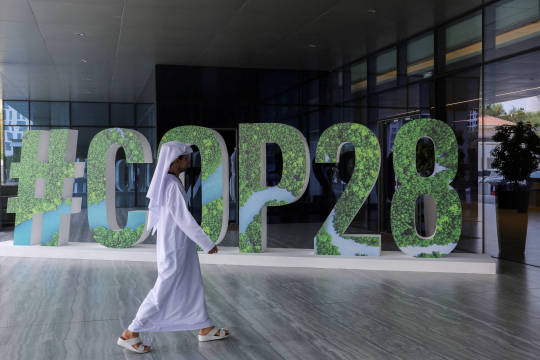
In addition to an extensive delegation composed of congressmen, members of civil society, businesspeople, and researchers, the top echelon of the federal government is expected to have a massive presence at COP28, the UN (United Nations) climate conference beginning this Thursday (30) in Dubai, United Arab Emirates.
At least 12 ministers are expected to participate: Marina Silva (Environment), Mauro Vieira (Foreign Affairs), Fernando Haddad (Finance), Alexandre Silveira (Mines and Energy), Rui Costa (Chief of Staff), Sônia Guajajara (Indigenous Peoples), Luciana Santos (Science, Technology, and Innovation), Carlos Fávaro (Agriculture and Livestock), Paulo Teixeira (Agrarian Development and Family Agriculture), Jader Filho (Cities), Celso Sabino (Tourism), and Cida Gonçalves (Women).
Continue reading.
#brazil#brazilian politics#politics#environmentalism#foreign policy#cop28#mod nise da silveira#image description in alt
3 notes
·
View notes
Text
➝ The Papal Bloodlines Black Nobility Crime Families 🚨
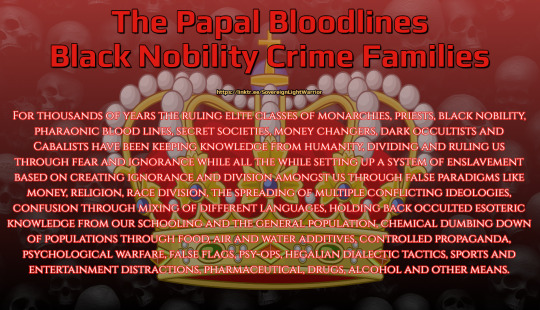
For thousands of years the ruling elite classes of monarchies, priests, black nobility, pharaonic blood lines, secret societies, money changers, dark occultists and Cabalists have been keeping knowledge from humanity, dividing and ruling us through fear and ignorance while all the while setting up a system of enslavement based on creating ignorance and division amongst us through false paradigms like money, religion, race division, the spreading of multiple conflicting ideologies, confusion through mixing of different languages, holding back occulted esoteric knowledge from our schooling and the general population, chemical dumbing down of populations through food, air and water additives, controlled propaganda, psychological warfare, false flags, psy-ops, hegalian dialectic tactics, sports and entertainment distractions, pharmaceutical, drugs, alcohol and other means.
These international criminals and royal and noble crime bloodlines are threatening society with more fake epidemics, weaponized forced vaccinations, wars based on lies, civil war, world war, martial law, and genocides. They are attacking society with secret societies, organized crime, corporate fraud, and electronic weapons. These bloodlines spread plagues and have been doing that for hundreds of years. These families are behind all the major wars including World War I and World War II. When real people stand up to tyrants like them they infiltrate opposition such as the American Revolutionary War which was hijacked by Freemasons. These criminals collectively have trillions of dollars in offshore accounts in Switzerland, Liechtenstein, and Luxembourg and they are controlling the Bank for International Settlements. They extort governments and people and make hundreds of billions per year through organized crime. They torment people with electronic weapons. The entire electronic grid has been weaponized with neuro-bio hacking programs.
They finance continual lying in society through the media and entertainment. Their primary tactics are lying, making false accusations against people who expose them, and using phony arrogance to appear like they are in control at all times. The royals and nobles run all the religious organizations, secret societies and covert organizations like the Jesuits, Freemasons, Rosicrucians, Scientologists, Skull and Bones, Kabbalists, Wiccans, Five Percenters, Knights of Columbus, Knights of Malta, Shriners etc. They own the organized crime syndicates including all mafias, drug cartels, street gangs, and biker gangs. They oversee the global organizations like the United Nations, NATO, World Bank, IMF, World Economic Forum, World Health Organization, CERN, Maritime Law, INTERPOL, Conference on Disarmament, Red Cross, Geneva Conventions, etc. These criminals have infiltrated every government agency in the world through pedophilia, child sacrifices, criminal financing, bribery, secret organizations, and mafia tactics. They have designed all governments as corporate entities and chartered subsidiaries of their corporate houses and monarchies. They are mass human traffickers, mass murderers, and war criminals who commit crimes against humanity at all times.
Continue: https://thegreatwork208716197.wordpress.com/2022/10/23/the-papal-bloodlines-black-nobility-crime-families/
2 notes
·
View notes